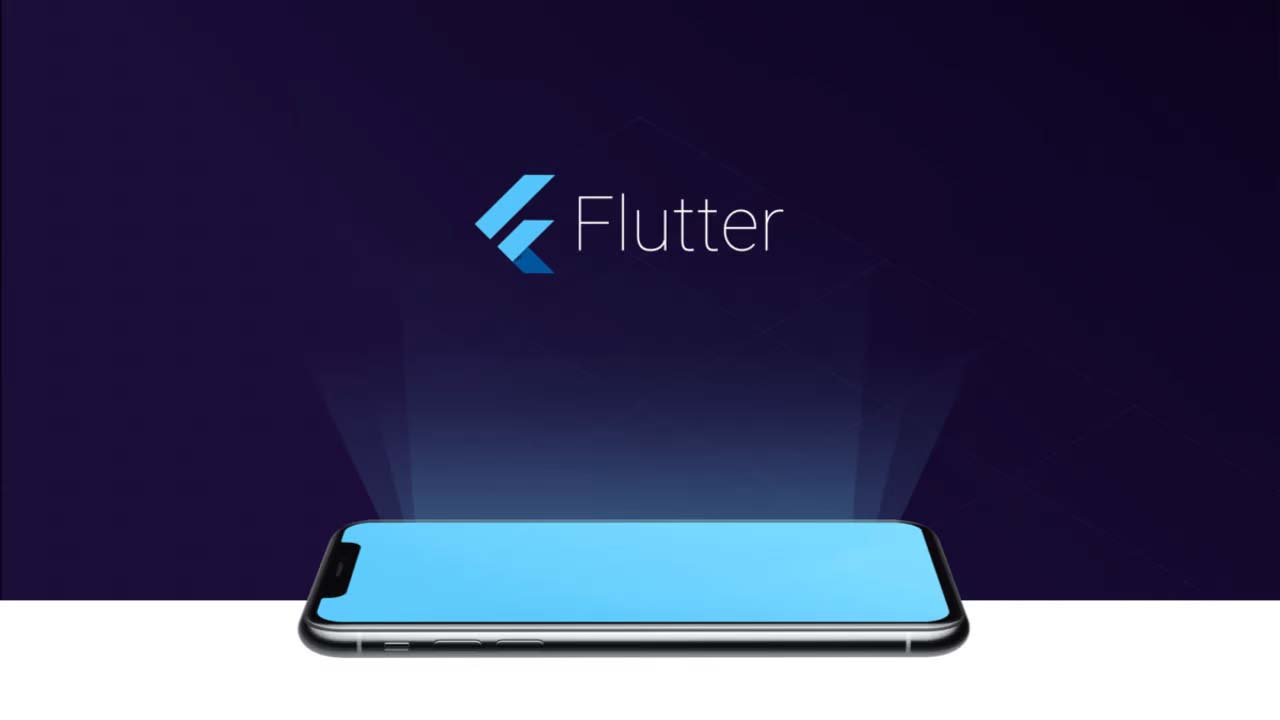Unlocking the Power of Unified Mobile App Development with Flutter
Flutter, Google’s portable UI toolkit, has redefined how we build applications. It creates a seamless experience across mobile, web, and desktop platforms, all from a single codebase.
What Sets Flutter Apart?
Flutter simplifies the complexities of mobile app development. Designed for high-performance, high-fidelity apps on both iOS and Android, Flutter embraces differences in scrolling behaviours, typography, and icons, ensuring a natural feel across platforms. Even without prior mobile development experience, anyone can dive into Flutter. Written in Dart, familiar to those versed in Java or JavaScript, Flutter empowers developers and even non-programmers to create exceptional apps.
Advantages of Flutter
- High Productivity: Develop for iOS and Android using a single codebase, maximizing efficiency.
- Efficient Coding: Thanks to Dart’s expressive language and Flutter’s declarative approach, achieve more with less code.
- Rapid Prototyping: Experiment freely, change code on the go, and witness real-time results with Flutter’s revolutionary hot reload feature.
- Beautiful User Experiences: Craft highly customized, brand-driven designs using Flutter’s rich Material Design and Cupertino widgets.
- Flexibility in Design: Unlike other frameworks, Flutter liberates you from the constraints of OEM widget sets, enabling the realization of unique and captivating user interfaces.
Core Principles of Flutter
- Everything’s a Widget: In Flutter, widgets are the fundamental building blocks. Each widget, be it a button or a font style, is an immutable declaration of a part of the user interface.
- Hierarchy of Widgets: Widgets form a hierarchy based on composition. Each widget nests inside its parent, creating a unified object model. There’s no separate “application” object; the root widget plays this role.
- Responsive User Interface: Flutter allows you to respond to events such as user interaction by replacing widgets efficiently. This ensures a dynamic and responsive user interface, even as the app evolves.

Before we delve into the intricate world of Flutter app development, we must understand the fundamental pillars that hold our applications together: Data Storage, Navigation, and State Management. These core concepts form the backbone of every Flutter project, shaping how our apps store and retrieve data, navigate between screens, and manage their states effectively. In this part, we will explore the significance of these aspects, unravelling the essential techniques and best practices that empower Flutter developers to create seamless and efficient mobile experiences.
State management
Effective state management is vital in Flutter, especially as applications become more intricate. It involves organizing the data (state) a Flutter app uses, ranging from user input and UI visibility to network requests and database interactions.
Navigating the complexity of state management in Flutter often leads developers to seek packages that streamline processes, eliminating the need to juggle multiple setState and InheritedWidgets. These packages serve as efficient abstractions, handling intricate details under the hood.
Flutter offers diverse state management packages, each tailored to different needs. Notable options like Provider, BLoC (Business Logic Component), MobX, GetX, and Redux simplify state management, enhancing application reactivity.
Understanding these packages empowers developers to build responsive, scalable applications without drowning in the intricacies of state management.
Navigation
When you step into Flutter navigation, your exploration begins with grasping fundamental concepts. Let’s take a concise glimpse into these core ideas.
MaterialApp
Application’s Foundation: MaterialApp is the foundational element, controlling vital aspects like the app’s title, theme, and initial navigation route. It is the external widget in the widget tree, allowing centralized management of essential app properties.
Routes
Navigation Destinations: Routes serve as designated destinations mapped within your navigation system. Creating a route table here is critical; it establishes connections between routes and their corresponding widget classes, constructing an intuitive and seamless flow within the app.
Widgets
Enhancing Interface: Dive into navigation-specific widgets tailored to optimize interface design. These widgets are pivotal in improving the overall user experience, ensuring fluid and intuitive movement throughout the application.
Navigator Class
Enabling Smooth Flow: Utilize the Navigator class to stack route pages, ensuring a seamless transition between destinations. This stacking mechanism maintains a cohesive and uninterrupted flow, enhancing user engagement and navigation ease.
Routes are the foundation of your navigation system, serving as the guiding map that outlines the user’s journey within the application. Understanding how to create and map routes is essential, providing various methods to define these pathways:
Named Routes
Organized Navigation: Named routes provide structured navigation, allowing you to move between screens seamlessly using unique identifiers. This method ensures clarity and ease of understanding, enhancing user experience.
On-the-fly Routes
Dynamic Adaptability: On-the-fly routes empower your app to adapt dynamically. Creating routes based on user input or specific conditions makes your application flexible, catering to individual user interactions in real time.
Nested Routes
Hierarchical Structure: Nested routes introduce a hierarchical structure to your app’s navigation flow. This method enables the creation of intricate navigation patterns, ensuring smooth and logical movement between different screens and enhancing overall app navigation.
Push and Pop Navigation
Effortless Transitions: Push and pop navigation simplifies screen transitions. Using Flutter’s navigator push() method, you seamlessly move to another screen, maintaining a cohesive user experience. Additionally, navigator.pop() allows users to navigate back, ensuring intuitive and effortless navigation throughout the app.
Routing Animations
Engaging User Experience: Routing animations offer customization options for navigation transitions. By implementing tailored animations, you can create visually engaging transitions between screens. These animations enhance user engagement, making the overall app experience more immersive and enjoyable.
 Data Storage
Data Storage
There are several available data storage options in Flutter applications.
Local Storage
SharedPreferences: What are SharedPreferences?
SharedPreferences is a simple key-value storage system Flutter provides for persisting small amounts of data, such as user preferences and settings. It’s easy to use and doesn’t require additional packages.
Key Points
- Stores data as key-value pairs persistently across app restarts.
- Suitable for storing simple data like user preferences.
- It does not support encryption and should not be used for sensitive information.
What is SQLite in Flutter?
SQLite in Flutter is a local database engine that allows seamless data storage and retrieval. It organizes data in tables, supports asynchronous operations, and enables powerful SQL queries for complex data manipulation.
Key Points
- Local Database: Integrates a database directly into the app for structured data storage.
- Structured Storage: Organizes data in tables, allowing complex data structures.
- Asynchronous Operations: Supports non-blocking database interactions for a responsive user experience.
- Transactions: Enables grouping multiple operations for data integrity.
- Data Encryption: Provides encryption for secure storage of sensitive information.
Secure Storage: What is Secure Storage?
Secure storage in Flutter refers to the secure and encrypted storage of sensitive data, such as authentication tokens, API keys, or private information. Flutter provides several packages to achieve secure storage, with flutter_secure_storage being popular.
Key Points
- Encrypts data before storing it, enhancing security.
- Provides platform-specific implementations for iOS and Android.
- Requires user permissions for secure storage access.
Cloud Storage
Firebase Cloud Firestore
Firebase Cloud Firestore is a NoSQL cloud database designed for realtime synchronization and seamless integration with Flutter applications. It stores data in collections and documents, offering realtime updates and offline support.
Key Points
- NoSQL Database: Stores data in collections and documents.
- Realtime Updates: Provides realtime synchronization for dynamic data changes.
- Offline Support: Allows users to access data even without an internet connection.
- Scalability: Scales seamlessly with growing data requirements.
Firebase Realtime Database
Firebase Realtime Database is a cloud-hosted NoSQL database, storing data as JSON and providing realtime synchronization across connected clients. It offers low-latency updates, making it suitable for realtime applications.
Key Points
- JSON-Based Storage: Stores data as JSON objects.
- Realtime Synchronization: Updates data in realtime across connected devices.
- Low Latency: Provides quick data updates, which is ideal for responsive applications.
- Offline Capabilities: Supports offline data access and synchronization.
REST APIs
REST APIs (Representational State Transfer Application Programming Interfaces) provide a standard way for web applications to communicate using HTTP requests. In Flutter, REST APIs fetch and send data to server endpoints, enabling seamless integration with various external services.
Key Points
- HTTP Communication: Utilizes HTTP methods like GET, POST, PUT, and DELETE for data exchange.
- Data Formats: Supports data formats like JSON and XML for communication.
- Stateless: Stateless communication without session management enhances scalability.
- Flexibility: Compatible with a wide array of platforms and technologies.
When choosing photos, it’s essential to ensure they are high-resolution to maintain quality. Look for images from reputable sources or captured with high-quality cameras. Checking the image’s PPI or DPI values and file size can also indicate its resolution. It’s always better to opt for images with a higher resolution as they provide better clarity and can be scaled down if needed without losing quality.
Flutter is not just a framework; it’s a paradigm shift in app development. Its simplicity, versatility, and realtime capabilities empower developers to create innovative, cross-platform applications that redefine user experiences. Dive into the Flutterverse and unlock a world of endless possibilities in app development. 🚀
#ILATech #Flutter #CrossPlatform #MobileAppDevelopment #InnovationInTech
